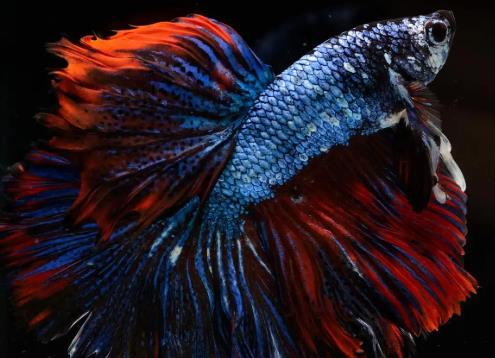Here is a comprehensive guide to distinguishing the gender of betta fish:

I. Physical Characteristics
Body Shape and Color
Male fish: Have a slender body, bright colors, and broad, flowing fins (especially the caudal and dorsal fins) with obvious (extended filaments).
Female fish: Have a rounder and shorter body, duller colors, and shorter fins. Their abdomens may swell due to carrying eggs.
Abdomen and Genital Pore
Female fish have a visible white genital pore (oviposition point) under their abdomen, and their abdomen becomes swollen when mature; male fish have a flat abdomen with no obvious genital pore.
When the abdomen is illuminated against light, female fish show a long, strip-shaped shadow of the ovary, while male fish do not.
II. Behavioral Differences
Courtship Behavior
Male fish actively build bubble nests, display their bright body colors, and spread their fins to attract females.
Female fish swim vertically up and down during the breeding period, with a significantly swollen abdomen.
Aggressiveness
Male fish are more aggressive and often actively display their fins; female fish are relatively docile.
III. Other Auxiliary Methods
Head Shape and Stripes: Male fish have a more imposing head, and their body stripes have clear boundaries; female fish have a smaller, pointed head with blurry stripes.
Pectoral Fin Shape: Female fish have short pectoral fins, while male fish have long and flowing pectoral fins.
Notes
It is difficult to distinguish the gender of juvenile fish, so multiple characteristics need to be combined for judgment.
When observing the genital pore or using the light method, handle the fish gently to avoid hurting them.
By combining the above characteristics, you can accurately distinguish the gender of betta fish.
